Perseids: Meteor shower captured across UK skies
- Published
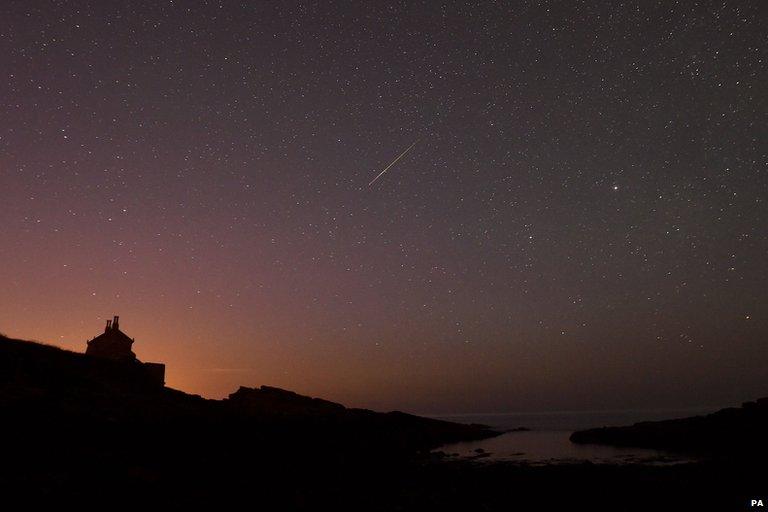
Shooting stars could be seen in Howick, Northumberland, in the early hours of Thursday
Stargazers captured the dazzling display of the annual Perseid meteor shower as it reached its peak on Wednesday night.
The display was widely anticipated this year as the shower coincided with a new moon for the first time since 2007, creating a darkened sky.
People in the Midlands and the north of England had the best view of the meteor shower.
Cloud cover spoilt visibility for some parts of southern England and Scotland.
Comet Swift-Tuttle
The Perseids - which are pieces of Comet Swift-Tuttle - are active each year from around 17 July to 24 August, although for most of that period only a few meteors an hour are visible.
The peak came overnight on Wednesday, with more than 100 meteors an hour produced.
The peak of the display occurs when the shower's "radiant" - the point from which the meteors appear to originate - is highest in the sky.
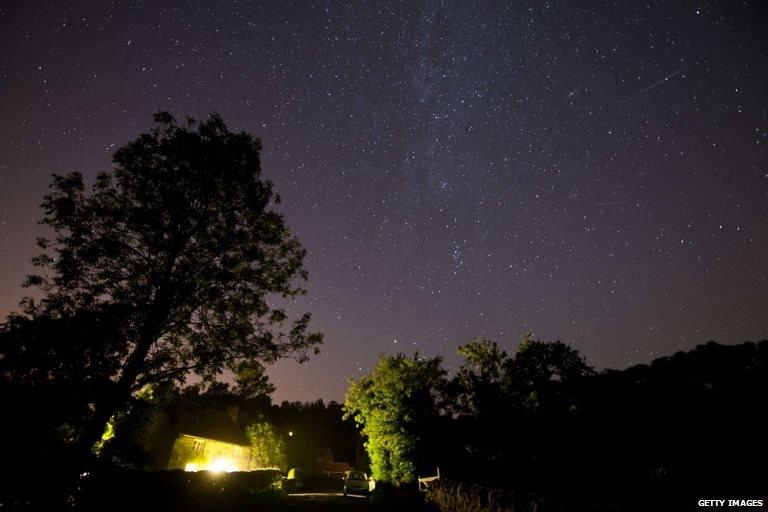
The meteor shower was seen clearly from the village of Rievaulx near Helmsley in North Yorkshire
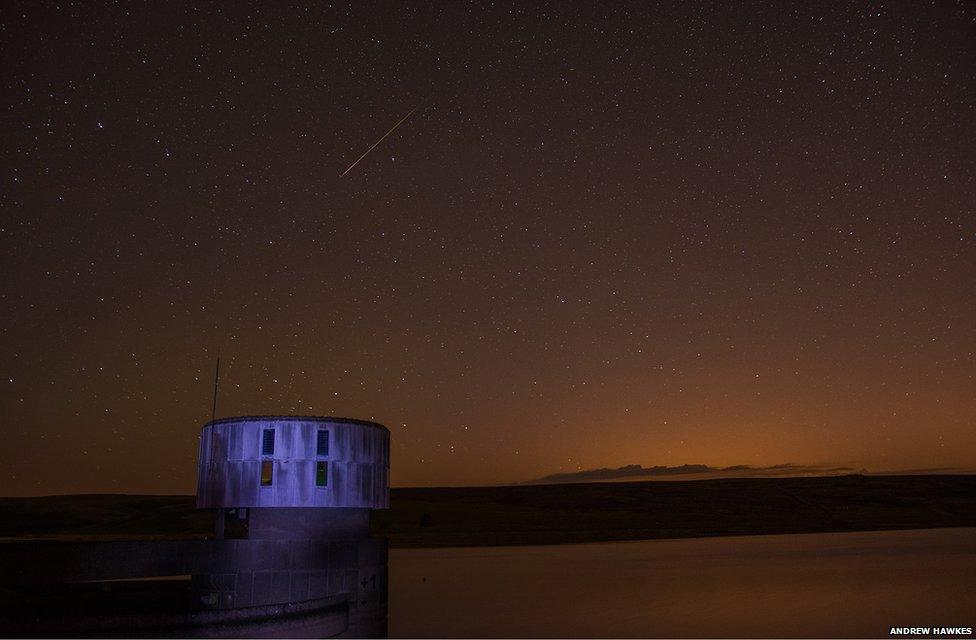
Andrew Hawkes snapped this image on Wednesday morning at Grimwith Reservoir in the Yorkshire Dales
Prof Mark Bailey, director of Armagh Observatory in Northern Ireland, said the Perseids were "one of the best and most reliable meteor showers of the year".
Robin Scagell, vice president of the Society for Popular Astronomy, said: "The thing about shooting stars is they're a wonderful free spectacle we can all enjoy, assuming clear skies.
"The Perseids are usually fairly bright. Also, they tend to leave a trail, or train, behind them. You can see the train hanging there glowing in the sky for a few seconds - sometimes for several minutes - after the meteor has gone."
Your photos of the Perseid meteor shower - so far - in 60 seconds
Marek Kakula, public astronomer at the Royal Observatory described the comet dust as "travelling faster than the speed of a bullet".
"When they hit the atmosphere, they burn up in a little streak of light that lasts for just a few seconds," he added.
For most people, meteor showers are best viewed with the naked eye. Experts advise finding a dark location, away from artificial light, and an unobstructed view of the sky.
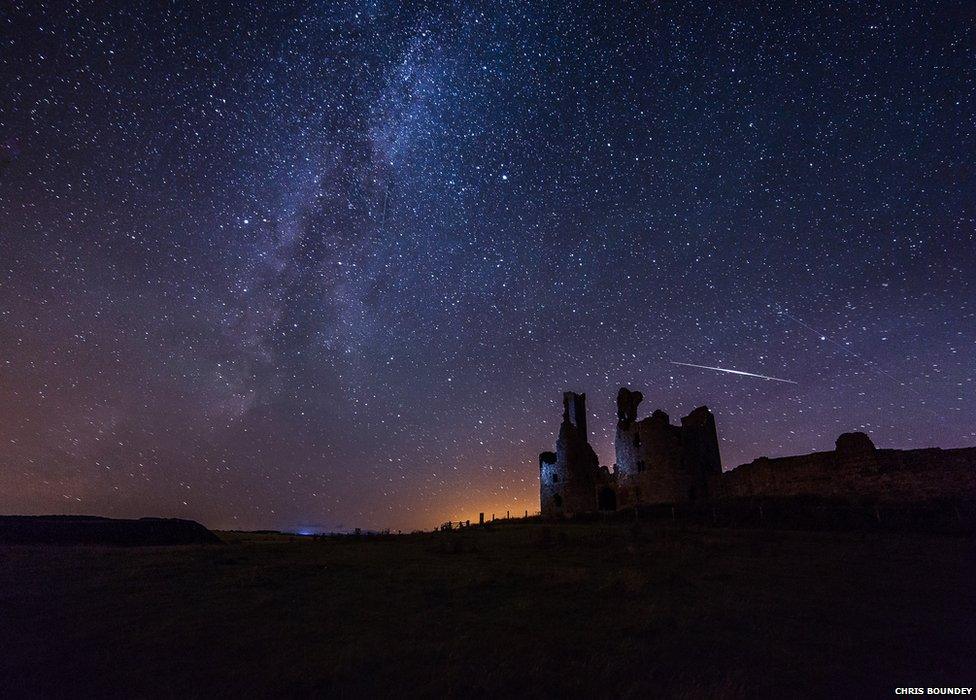
A meteor against the Milky Way, photographed early on Tuesday morning by Chris Boundey
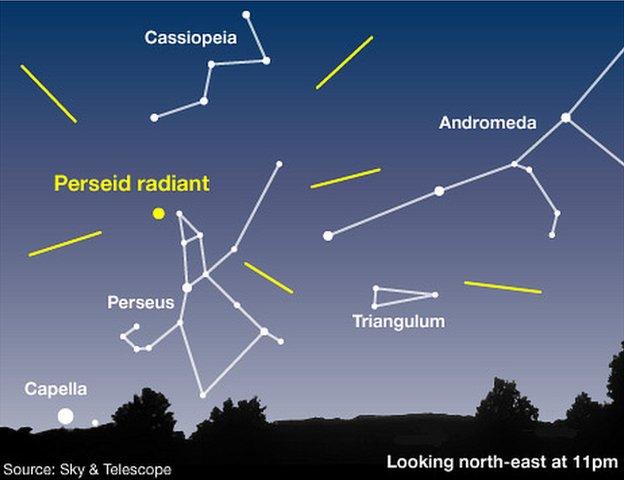
- Published13 August 2015
- Published13 August 2015
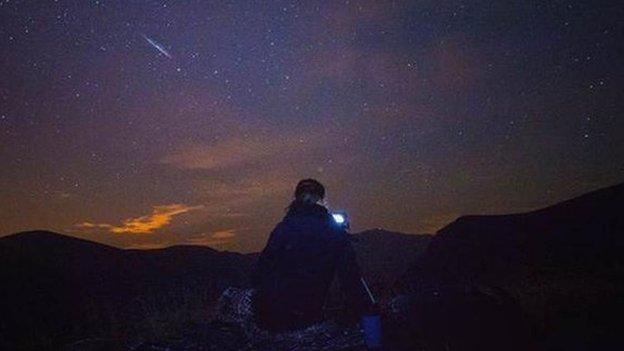
- Published11 August 2015
